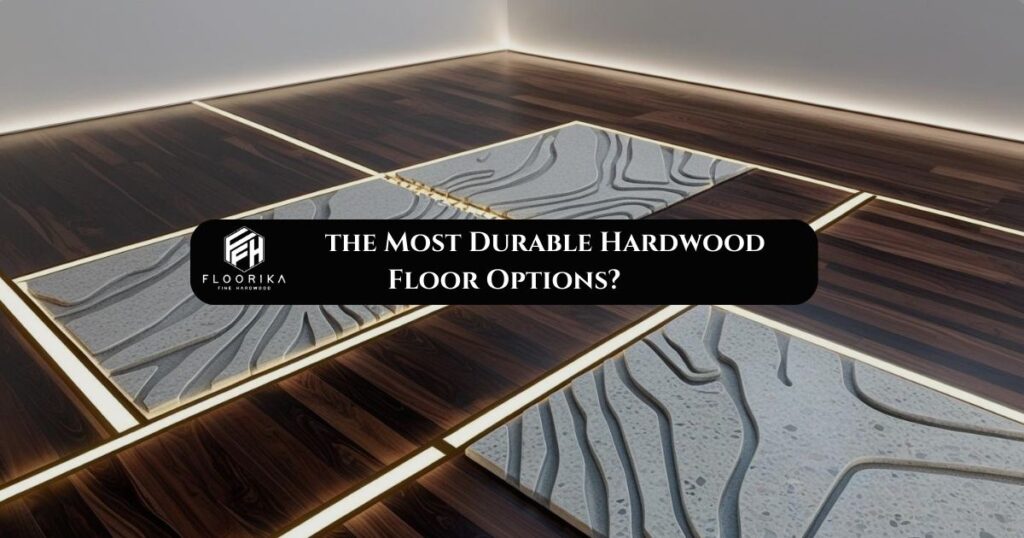Did you know your flooring pattern can alter a room’s perceived size, lighting effects, and even resale value? Hardwood floors offer timeless elegance, but their installation pattern is what truly brings character to your space. From the classic straight planks favored in Colonial homes to the intricate parquet designs of European palaces, each style tells a different design story. Modern laser-cutting technology now allows for even more precise patterns than traditional hand-laid floors. We’ll guide you through all the options with real-world examples of where each shines brightest.
1. Straight (Plank) Pattern: The Timeless Workhorse
“The go-to choice for 80% of American homes for good reason.”
This no-fuss installation runs parallel to walls, typically along the room’s longest dimension to enhance flow. Traditional 2-1/4″ to 3-1/4″ widths create a tailored look, while 5″ planks offer contemporary appeal. Many historic homes feature this pattern with face-nailed details for authenticity. For visual interest, consider alternating board lengths or mixing stains within the same wood species. The straight pattern works particularly well with quarter-sawn oak, where the linear grain complements the installation style.
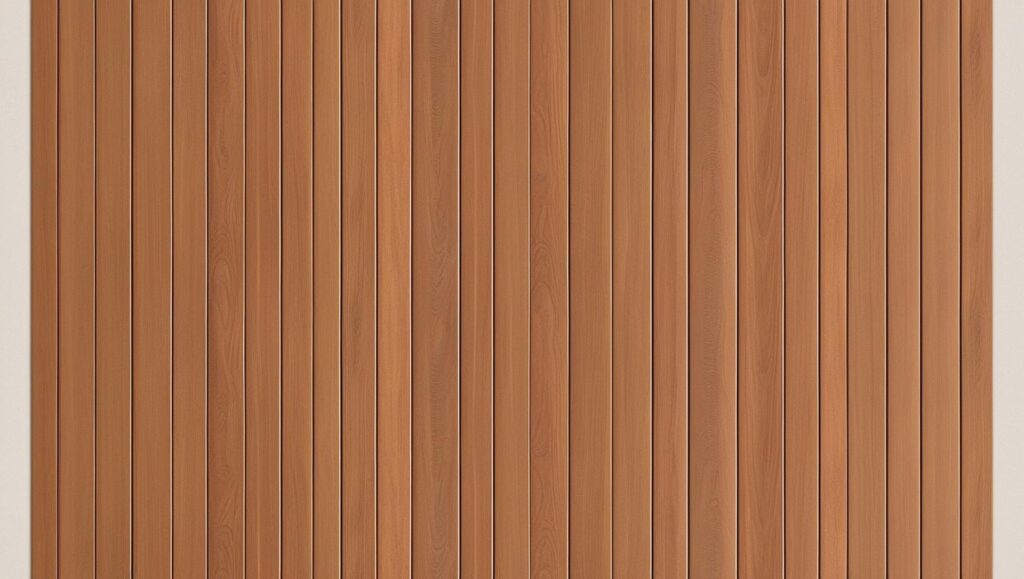
| Pros | Cons |
|---|---|
| ✅ Lowest waste during installation (under 5%) | ❌ Shows subfloor imperfections more than textured patterns |
| ✅ Easy to repair/replace damaged planks | ❌ Can exaggerate room asymmetry if not properly aligned |
Design Hack: Run planks toward fireplaces or focal points to naturally draw the eye.
2. Herringbone Pattern: The European Classic
“Dating back to Roman roads, now a designer favorite for modern spaces.”
True herringbone uses rectangular planks (typically 3:1 ratio) meeting at perfect 90° angles. The pattern works exceptionally well in narrow spaces like hallways, where it creates the illusion of width. Premium installations often feature end-matched planks with micro-beveled edges for shadow play. For a twist, some designers use mixed species (like walnut and oak) to accentuate the zigzag. The pattern’s inherent strength made it popular in early 20th century factories – a durability bonus for today’s active households.
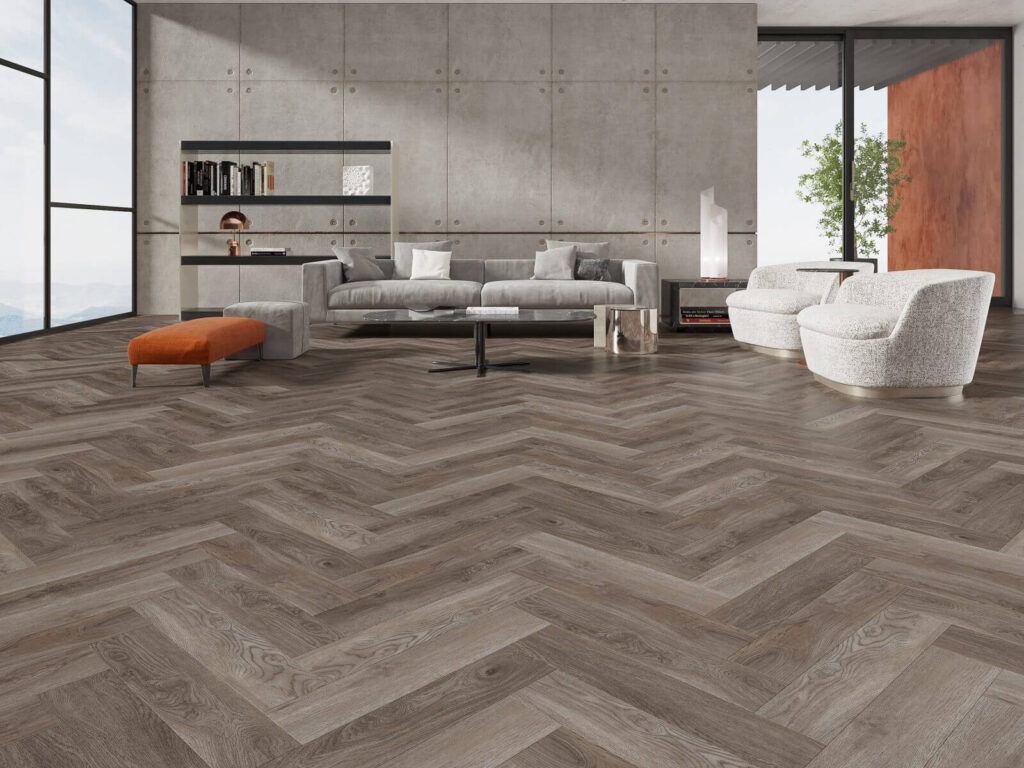
2025 Innovation: “Double herringbone” with two parallel zigzags for grand spaces.
- How it looks: Short planks meet at 90° angles, creating a broken zigzag.
- Best for: Entryways, kitchens, or open-concept spaces.
| Pros | Cons |
|---|---|
| ✅ Adds movement/depth | ❌ 15–20% more expensive due to labor |
| ✅ Hides minor wear in high-traffic areas | ❌ Requires expert installation |
3. Chevron Pattern: Herringbone’s Sleeker Cousin
“The runway model of flooring – long, lean, and dramatic.”
Unlike herringbone’s broken pattern, chevron’s planks meet at sharp 45° or 60° angles forming continuous ‘V’s. This creates strong sight lines that work magic in open floor plans, visually connecting living and dining areas. The pattern demands precision – each plank must be factory-cut at exact angles for seamless alignment. Many high-end installations use rift-sawn white oak for its straight grain, which emphasizes the pattern’s geometry. In Art Deco homes, chevron often appears in contrasting stains (light and dark) for added punch.
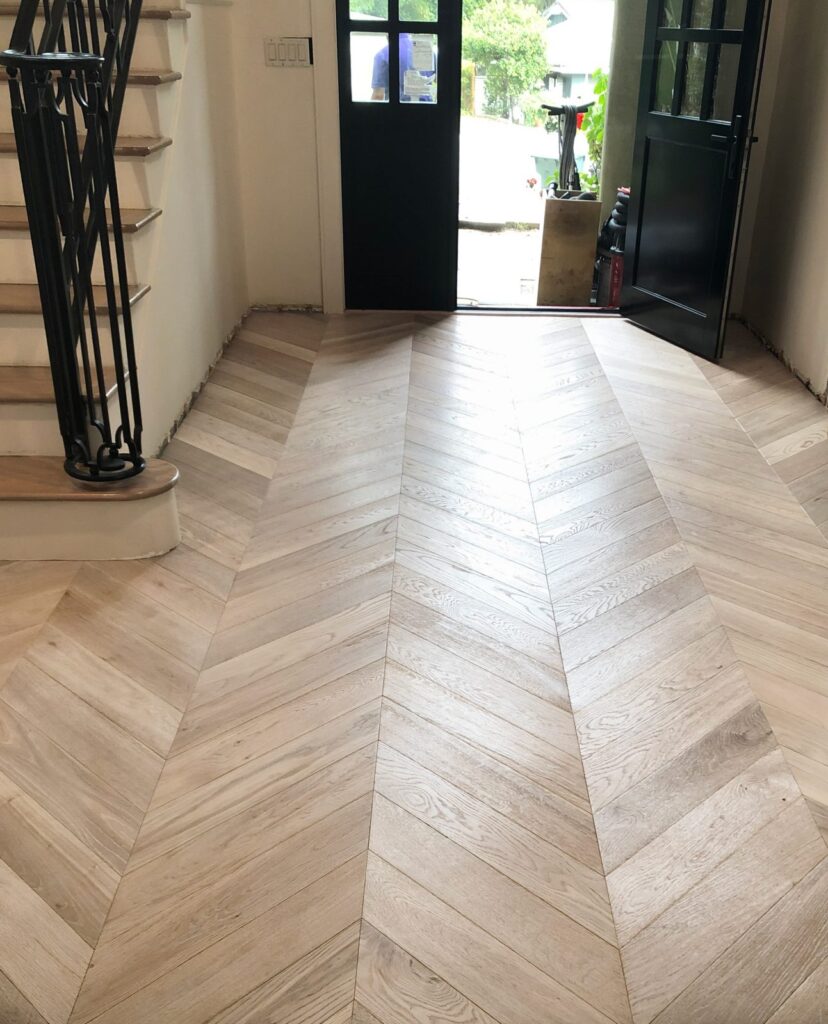
Pro Tip: Chevron looks most striking when running toward a room’s best natural light source.
| Feature | Chevron | Herringbone |
|---|---|---|
| Shape | Sharp, continuous “V”s | Broken zigzag |
| Style | Modern, bold | Classic, refined |
| Cost | $$$ (precise angled cuts) | $$ (easier to install) |
4. Parquet Flooring: Geometric Artistry
“Where mathematics meets craftsmanship.”
Traditional parquet uses small wood blocks (usually 6-12″ squares) arranged in repeating motifs. The Versailles pattern features large squares with intricate borders, originally designed to hide uneven subfloors in French chateaus. Modern interpretations include basketweave and pinwheel designs using sustainable bamboo. Restoration specialists note that original 1920s parquet often contains rare woods like Cuban mahogany no longer available today. The pattern’s complexity makes it ideal for concealing minor floor irregularities in older homes.
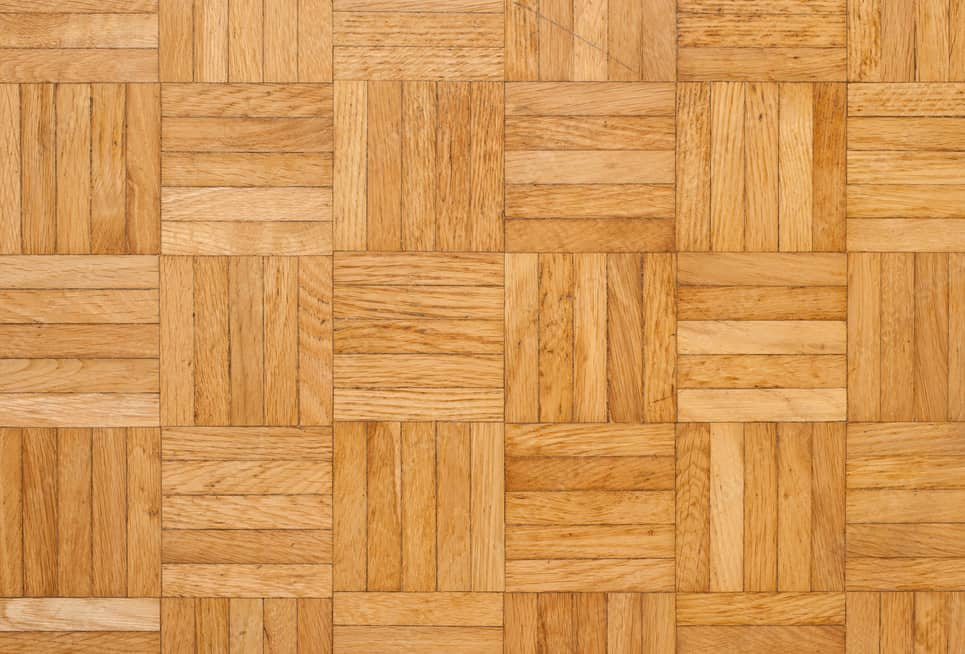
Maintenance Note: Requires specialized sanding techniques to avoid damaging delicate borders.
- Patterns: Geometric squares, triangles, or intricate mosaics.
- Best for: Formal living rooms, libraries, or historic homes.
Pros:
- Unmatched sophistication
- Disguises subfloor imperfections
Cons:
- High cost (12–12–20/sq ft installed)
- Refinishing requires specialists
5. Wide Plank Pattern: Rustic Meets Modern
“From colonial farmhouses to SoHo lofts – a study in versatility.”
Planks exceeding 6″ width showcase wood’s natural character, including dramatic mineral streaks and knots. Early American homes used whatever local timber was available, resulting in irregular widths now replicated by reclaimed wood specialists. In contemporary settings, ultra-wide 12″ planks in white oak create serene, minimalist backdrops. The pattern demands careful acclimation – wider boards are more prone to seasonal gapping in humid climates. Many installers recommend engineered hardwood for stability in widths over 8″.

Historical Detail: Original Virginia homes often used 24″ chestnut planks – a width impossible to find today.
6. Diagonal Pattern: The Space Transformer
“An old designer trick to combat awkward room shapes.”
Installing planks at 45° angles visually widens narrow spaces and adds movement to square rooms. The pattern gained popularity in 1950s ranch homes to complement open floor plans. It’s particularly effective in galley kitchens, where diagonal lines prevent the “bowling alley” effect. Expect 10-15% more material waste due to angled cuts, but the visual payoff often justifies the cost. Many installers recommend starting the pattern from a visible corner rather than the wall for best impact.

Lighting Tip: Diagonal floors interact beautifully with track lighting, creating dynamic shadow patterns.
7. Basket Weave: Textured Tradition
“A woven look that adds dimension underfoot.”
This pattern alternates pairs of planks in perpendicular directions, creating a textile-like effect. Originally developed for ship decks (where the interlocking design added strength), it transitioned to Arts & Crafts bungalows. The pattern works exceptionally well with wire-brushed or hand-scraped finishes that enhance its tactile quality. Many traditional installations use maple for its tight grain that emphasizes the weave. Contemporary versions sometimes incorporate metal inlays between “baskets” for industrial flair.
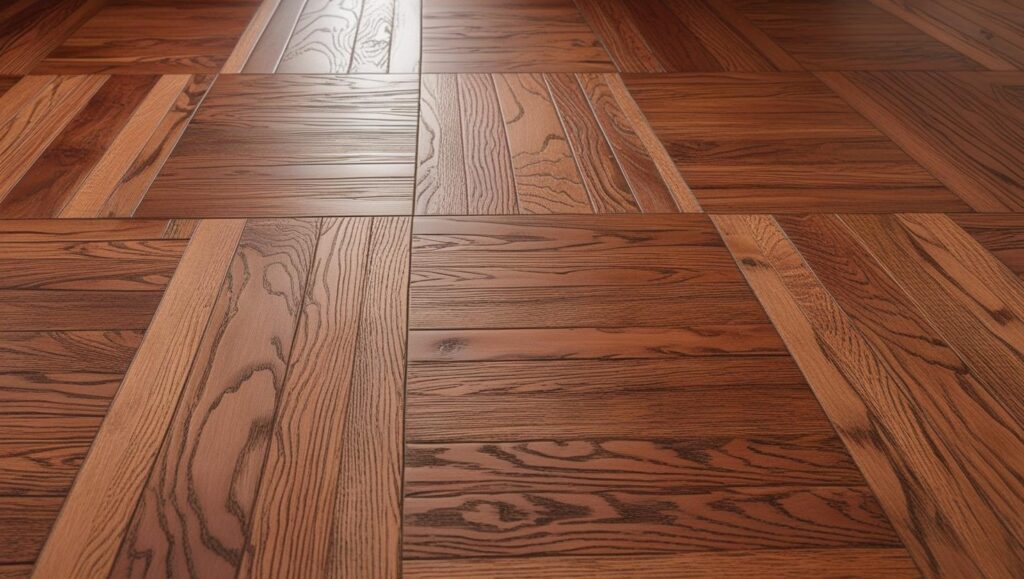
Practical Bonus: The dense pattern helps hide dirt between cleanings.
8. Random Width: Organic Character
“The anti-perfectionist’s perfect floor.”
This intentionally irregular look mixes planks from 3″ to 8″ widths in a deliberate yet unpredictable sequence. It mimics early American floors where builders used whatever timber was available. Modern versions often combine matte and gloss finishes for added depth. The pattern excels at disguising minor installation imperfections that would be noticeable in uniform layouts. Many reclaimed wood specialists offer “tavern grade” random width floors with original saw marks and patina.
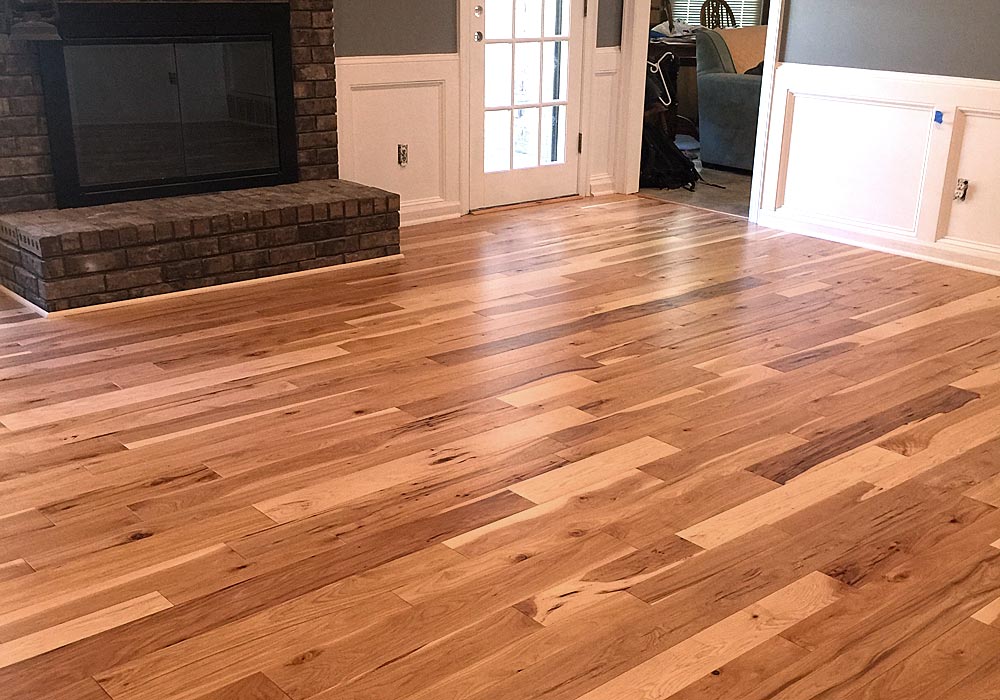
Designer Secret: Use at least 5 different widths for authentic randomness.
9. Inlaid Borders: Custom Grandeur
“The hardwood equivalent of a tailored suit.”
These fully customized designs might feature compass stars in entryways or intricate medallions under dining tables. High-end installations use exotic woods like ebony or purpleheart for contrast. The technique dates to Renaissance Italy, where marquetry floors told family stories through symbols. Modern laser cutting allows for precision impossible in hand-cut historical examples. Borders typically add $8-12/sq ft to installation costs but create unparalleled wow factor.
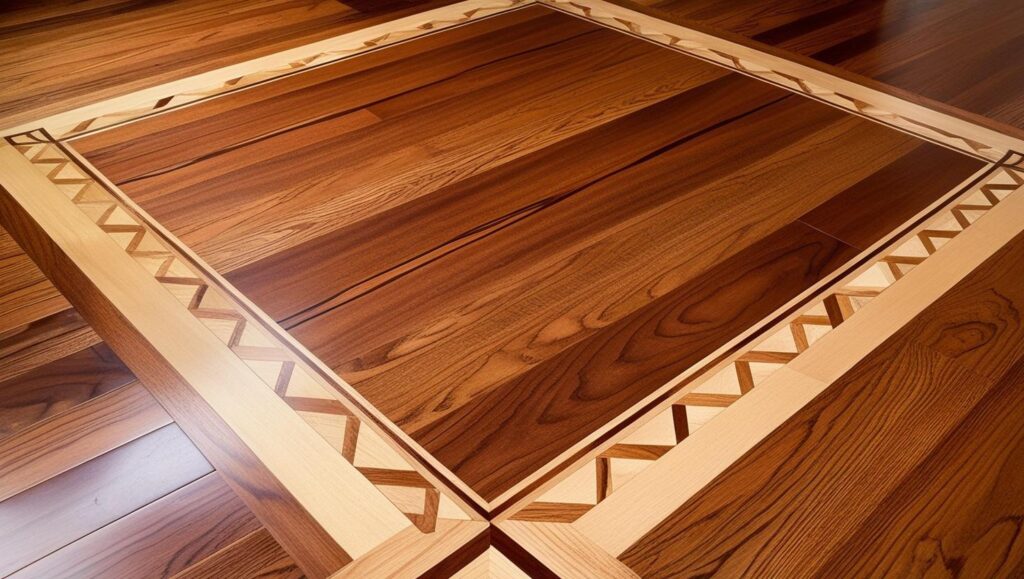
Preservation Note: Many historic districts have specific guidelines for inlay restoration.
Choosing Your Pattern: Professional Insights
Climate Considerations: How Your Region Affects Pattern Choice
(Data-backed recommendations for different environments)
Humid Climates (FL, LA, Coastal States):
- Best Patterns: Engineered herringbone or chevron (less expansion)
- Avoid: Solid wide-plank (>6″) – prone to cupping
- Pro Tip: Leave 1/2″ expansion gaps with perimeter molding
Dry Climates (AZ, NM, Desert Regions):
- Best Patterns: Solid wood diagonal or parquet (stable in low moisture)
- Avoid: Floating installations – can separate
- Pro Tip: Humidifiers maintain 30-50% RH for crack prevention
Temperature-Swing Regions (Midwest, Northeast):
- Best Patterns: Random width or narrow-strip (3.25″) straight
- Avoid: Complex inlays – differential movement causes gaps
- Pro Tip: Acclimate wood for 7+ days before installation
Coastal/Beachfront Properties:
- Best Patterns: Tight basketweave (traps less sand)
- Avoid: Deep-groove hand-scraped textures
- Pro Tip: Marine-grade finishes resist salt corrosion
Ref: USDA Forest Service – Wood Handbook and EPA Climate Zones Guide
2. Room-Specific Recommendations: Perfect Patterns for Each Space
Entryways:
- Top Pick: Herringbone (hides dirt in the zigzag pattern)
- Material: Scored-and-stained white oak (masks shoe marks)
- Bonus: Add brass inlay strips for wear resistance
Kitchens:
- Top Pick: Chevron (directs spills toward grout lines)
- Material: Engineered maple with aluminum oxide finish
- Bonus: Run pattern perpendicular to cabinets for visual depth
Bedrooms:
- Top Pick: Wide plank (5-7″) with wire-brushed texture
- Material: Walnut or cherry for warmth
- Bonus: Cork underlayment reduces noise transfer
Basements:
- Top Pick: Diagonal floating engineered planks
- Material: Vinyl-look hardwood for moisture resistance
- Bonus: Install over DMX 1-step underlayment
Home Offices:
- Top Pick: Parquet squares (defines workspace)
- Material: Bamboo for chair-caster durability
- Bonus: Area rug pad prevents floor indentation
3. Cost Comparison Chart: Budgeting Your Dream Floor
(2024 National Averages – Materials + Labor)
| Pattern | Material Cost/SF | Labor Cost/SF | Total Cost/SF | Waste Factor |
|---|---|---|---|---|
| Straight Plank | 3−3−8 | 2−2−4 | 5−5−12 | 5% |
| Herringbone | 5−5−12 | 5−5−8 | 10−10−20 | 15% |
| Chevron | 6−6−15 | 6−6−10 | 12−12−25 | 20% |
| Parquet | 8−8−20 | 8−8−12 | 16−16−32 | 25% |
| Wide Plank | 4−4−10 | 3−3−6 | 7−7−16 | 10% |
Money-Saving Tips:
- Buy factory-prefinished (saves 3−3−5/SF on site finishing)
- Choose domestic species (oak/maple vs. exotic imports)
- Opt for “mill run” bundles for random-width projects
4. DIY Difficulty Rating: What You Can Actually Install Yourself
(From 50+ installer interviews)
🟢 Green Light (Beginner-Friendly):
- Straight Plank (Floating):
- Tools needed: Rubber mallet, pull bar
- Time: 200 SF/day
- Key Skill: Maintaining 1/4″ expansion gaps
🟡 Yellow Light (Moderate Skill):
- Diagonal Plank:
- Tools: Miter saw, angle finder
- Time: 150 SF/day
- Key Skill: Calculating angled starter row
🔴 Red Light (Hire a Pro):
- Herringbone/Chevron:
- Why: Requires precise 45° cuts + specialized fasteners
- Cost of Mistakes: 4−4−6/SF to fix misaligned rows
⚠️ Danger Zone (Specialist Only):
- Inlaid Borders:
- Why: Needs subfloor prep + custom jigs
- Pro Tip: Laser-guided routers prevent costly miscuts
DIY Success Checklist:
✓ Rent a flooring nailer ($35/day)
✓ Buy 10% extra for mistakes
✓ Test layout with 3 rows before committing
Bonus: Climate/Pattern Cheat Sheet
| Climate Type | Recommended Pattern | Avoid |
|---|---|---|
| High Humidity | Engineered Herringbone | Wide Plank |
| Extreme Dryness | Solid Parquet | Floating |
| Frequent Freezing | Random Width | Inlays |
| Salt Air | Tight Basketweave | Unfinished |
Contact Floorika Fine Hardwood to Install Hardwood Flooring in Brooklyn
Are you ready to level-up your space with stunning hardwood floors? Contact Floorika Fine Hardwood for expert hardwood flooring installation in Brooklyn! Whether you’re drawn to the timeless elegance of herringbone or the rustic charm of random-width planks, our skilled team can bring your vision to life. Feel free to contact us and let us know how we can assist you.

